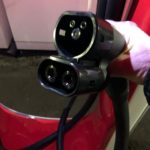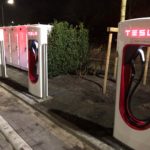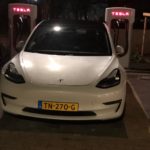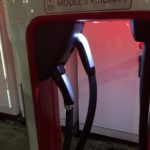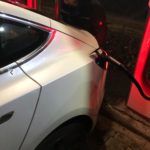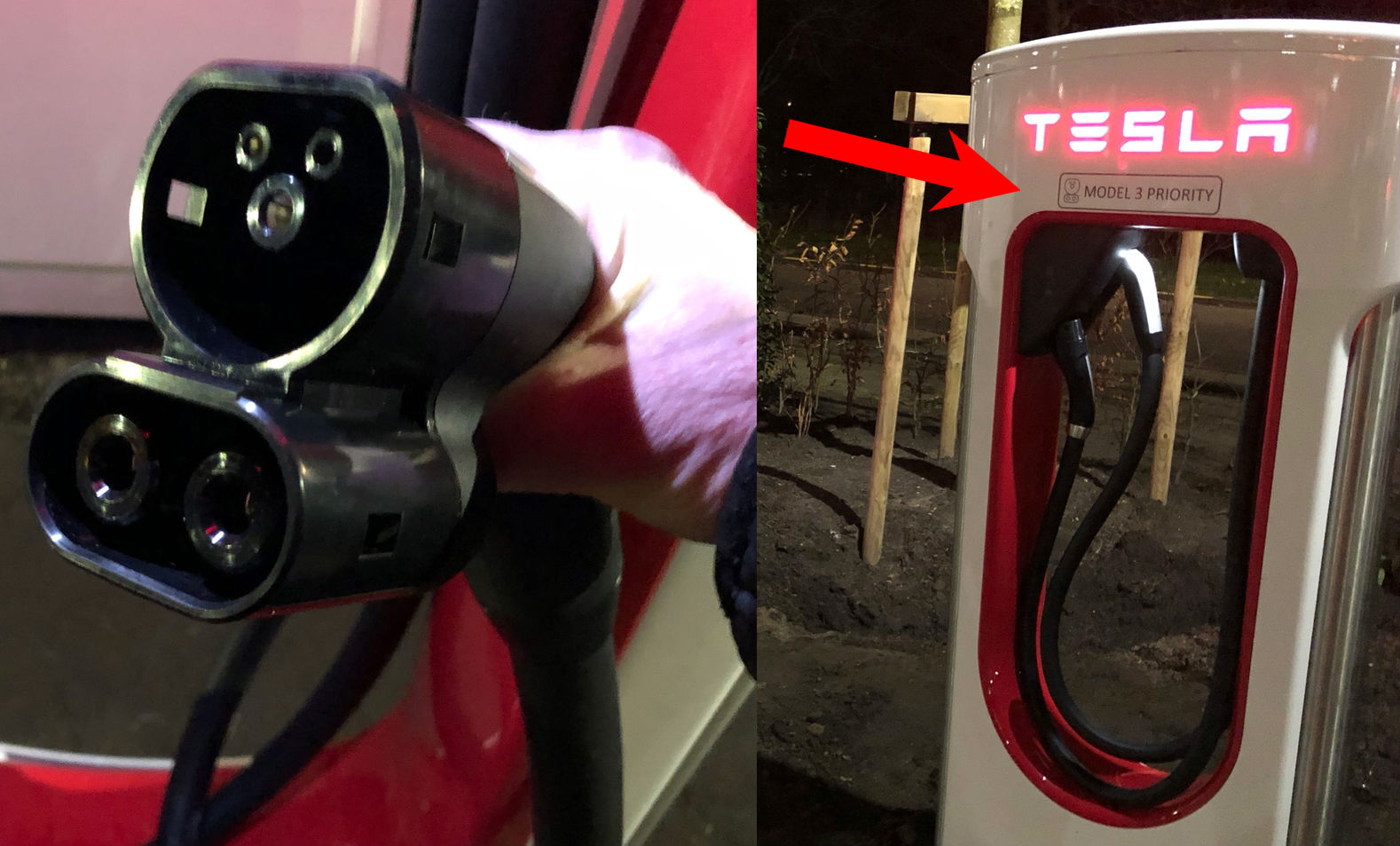
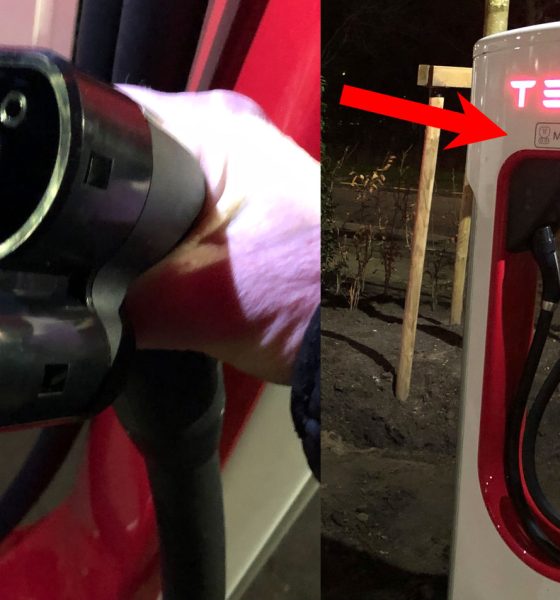
News
Tesla begins Supercharger CCS upgrade ahead of Model 3 rollout in Europe
It is still a couple of months before Model 3 deliveries in Europe are expected to begin, but Tesla is already starting the rollout of dual-charge CCS Superchargers in the region. The company confirmed last month that the Model 3 will be getting a CCS plug for Europe, while a CCS adapter will be introduced for the Model S and X. During its announcement for the Model 3’s charging standard for the region, Tesla noted that it would be “retrofitting our existing Superchargers with dual charge cables to enable Model 3, which will come with a CCS Combo 2 charge port, to use the Tesla Supercharger network.”
Tesla’s adoption of CCS (Combined Charging System) is a notable step for the electric car maker. CCS, after all, is prevalent in the region, being preferred by several European carmakers including BMW, Volkswagen and the Daimler group. The system combines the Type 2 design, which is used for slower AC charging at home or work, as well as with two large DC pins for rapid charging. CCS competes with the CHAdeMO rapid charging standard, which is being used by companies such as Nissan, Mitsubishi and Subaru.
Tesla owner-enthusiast Hans Noordsij visited the site of Tesla’s first dual charge Supercharger station, where he was able to take photos and meet Tesla staff who were working on the updated charging stall. Several details of the upgraded Supercharger were evident from Hans’ images, including a sign indicating that the new stations are “Model 3 Priority.”
- One of Tesla’s first dual-charge, CCS-compatible Superchargers in Europe. (Photo: Hans Noordsij)
- A close-up of Tesla’s CCS plug for the Model 3. (Photo: Hans Noordsij)
- One of Tesla’s first dual-charge, CCS-compatible Superchargers in Europe. (Photo: Hans Noordsij)
One of Tesla’s first dual-charge, CCS-compatible Superchargers in Europe. (Photo: Hans Noordsij)
Speaking to Teslarati after his trip to the Supercharger, Hans noted that Tesla was testing the connection of a Model 3 to the dual charge station when he arrived. Tesla’s staff reportedly informed him that they were aiming to add CCS connectors to every Supercharger in the Netherlands sometime in January.
We reached out to Tesla for more information about its first dual charge CCS Supercharger in Europe. The electric car maker noted that the first upgraded stations are located at the Badhoevedorp Supercharger near the Corendon Village Hotel, just outside Amsterdam. The site currently has 20 Superchargers, and Tesla is installing 8 more stalls on the site, each of which is fitted with both a CCS and a Type 2 connector. When completed, 8 out of the 28 stalls in the location would be compatible with the Model 3, S, and X, while the remaining 20 would be compatible with the flagship sedan and SUV.
Tesla plans to fully retrofit Europe’s Supercharger Network with its dual charge CCS system, allowing the Model 3 to have access to Tesla’s expansive charging infrastructure. While Tesla is in the process of retrofitting its Superchargers with CCS plugs, though, Model 3 owners in the region could expect their vehicles to smartly suggest charging stations that are fitted with the necessary connectors. The location, as well as the availability of these CCS stalls, would be displayed on the Model 3’s display.
- A Tesla Model 3 gets connected to one of Tesla’s first dual-charge, CCS-compatible Superchargers in Europe. (Photo: Hans Noordsij)
- One of Tesla’s first dual-charge, CCS-compatible Superchargers in Europe. (Photo: Hans Noordsij)
- A Tesla Model 3 gets connected to one of Tesla’s first dual-charge, CCS-compatible Superchargers in Europe. (Photo: Hans Noordsij)
A Tesla Model 3 gets connected to one of Tesla’s first dual-charge, CCS-compatible Superchargers in Europe. (Photo: Hans Noordsij)
Europe is a pivotal part of Tesla’s strategy for the Model 3, considering that the premium sedan segment is twice as big in the region as it is in the United States. The Model 3 is already performing well in the US, despite the country being enamored by SUVs and pickup trucks. In a market where sedans are prevalent such Europe, the Model 3’s potential is vast.
Considering that Tesla is now rolling out CCS plugs on its European Supercharger Network, the idea of Tesla sharing its charging infrastructure with other electric cars emerges once more. Tesla’s head of global charging infrastructure, Drew Bennett, addressed this in an interview with Auto Express UK, where he noted that several EV makers have already reached out to Tesla about sharing the Supercharger Network.
“We’re definitely open to talking to other car manufacturers who want to have access to the network. Capacity is a driver for our investment; it’s new routes, new markets and then capacity. A lot of car makers have spoken to us about it, but we haven’t had any conclusive discussions on it. They’re still trying to figure out what they would need in a network, but we’re a couple of years ahead of them in terms of embracing the investment required to transition to EVs,” Bennett said.

Elon Musk
Tesla CEO Elon Musk announces major update with texting and driving on FSD
“Depending on context of surrounding traffic, yes,” Musk said in regards to FSD v14.2.1 allowing texting and driving.
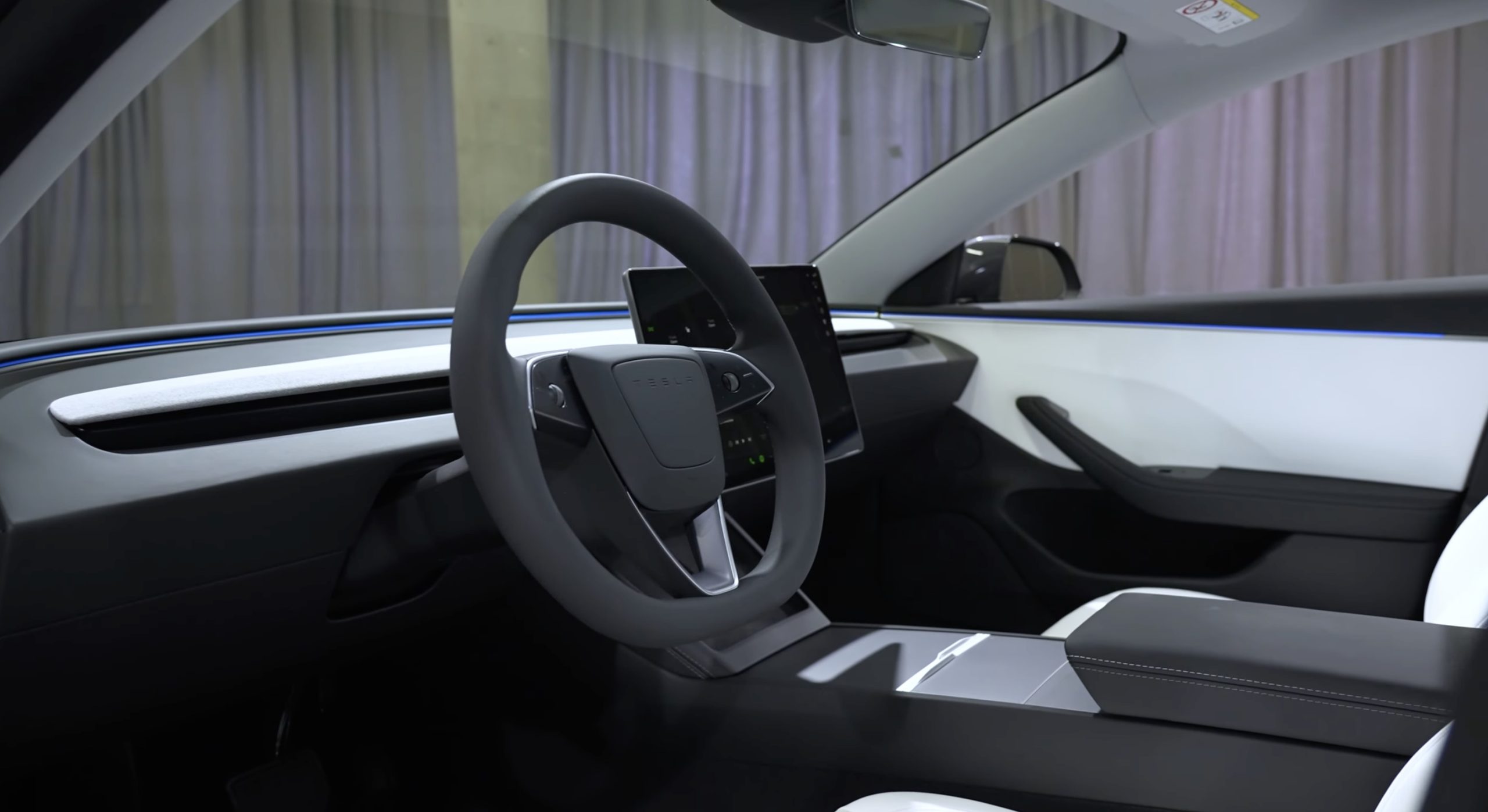
Tesla CEO Elon Musk has announced a major update with texting and driving capabilities on Full Self-Driving v14.2.1, the company’s latest version of the FSD suite.
Tesla Full Self-Driving, even in its most mature and capable versions, is still a Level 2 autonomous driving suite, meaning it requires attention from the vehicle operator.
You cannot sleep, and you should not take attention away from driving; ultimately, you are still solely responsible for what happens with the car.
The vehicles utilize a cabin-facing camera to enable attention monitoring, and if you take your eyes off the road for too long, you will be admonished and advised to pay attention. After five strikes, FSD and Autopilot will be disabled.
However, Musk announced at the Annual Shareholder Meeting in early November that the company would look at the statistics, but it aimed to allow people to text and drive “within the next month or two.”
He said:
“I am confident that, within the next month or two, we’re gonna look at the safety statistics, but we will allow you to text and drive.”
“I am confident that, within the next month or two, we’re gonna look at the safety statistics, but we will allow you to text and drive.”
Does anyone think v14.3 will enable this? pic.twitter.com/N2yn0SK70M
— TESLARATI (@Teslarati) November 23, 2025
Today, Musk confirmed that the current version of Full Self-Driving, which is FSD v14.2.1, does allow for texting and driving “depending on context of surrounding traffic.”
Depending on context of surrounding traffic, yes
— Elon Musk (@elonmusk) December 4, 2025
There are some legitimate questions with this capability, especially as laws in all 50 U.S. states specifically prohibit texting and driving. It will be interesting to see the legality of it, because if a police officer sees you texting, they won’t know that you’re on Full Self-Driving, and you’ll likely be pulled over.
Some states prohibit drivers from even holding a phone when the car is in motion.
It is certainly a move toward unsupervised Full Self-Driving operation, but it is worth noting that Musk’s words state it will only allow the vehicle operator to do it depending on the context of surrounding traffic.
He did not outline any specific conditions that FSD would allow a driver to text and drive.
News
Tesla Semi just got a huge vote of confidence from 300-truck fleet
The confidential meeting marks a major step for the mid-sized carrier in evaluating the electric truck for its regional routes.

The Tesla Semi is moving closer to broader fleet adoption, with Keller Logistics Group wrapping up a key pre-production planning session with the electric vehicle maker’s team this week.
The confidential meeting marks a major step for the mid-sized carrier in evaluating the electric truck for its regional routes.
Keller’s pre-production Tesla Semi sessions
Keller Logistics Group, a family-owned carrier with over 300 tractors and 1,000 trailers operating in the Midwest and Southeast, completed the session to assess the Tesla Semi’s fit for its operations. The company’s routes typically span 500-600 miles per day, positioning it as an ideal tester for the Semi’s day cab configuration in standard logistics scenarios.
Details remain under mutual NDA, but the meeting reportedly focused on matching the truck to yard, shuttle and regional applications while scrutinizing economics like infrastructure, maintenance and incentives.
What Keller’s executives are saying
CEO Bryan Keller described the approach as methodical. “For us, staying ahead isn’t a headline, it’s a habit. From electrification and yard automation to digital visibility and warehouse technology, our teams are continually pressure-testing what’s next. The Tesla Semi discussion is one more way we evaluate new tools against our standards for safety, uptime, and customer ROI. We don’t chase trends, we pressure-test what works,” Keller said.
Benjamin Pierce, Chief Strategy Officer, echoed these sentiments. “Electrification and next-generation powertrains are part of a much broader transformation. Whether it’s proprietary yard systems like YardLink™, solar and renewable logistics solutions, or real-time vehicle intelligence, Keller’s approach stays the same, test it, prove it, and deploy it only when it strengthens service and total cost for our customers,” Pierce said.
News
Tesla extends FSD Supervised ride-alongs in Europe by three months
Needless to say, it does appear that FSD fever is starting to catch in Europe.

Tesla appears to be doubling down on its European Full Self-Driving (Supervised) push, with the company extending its demo ride-along program by three months until the end of March 2026. The update seems to have been implemented due to overwhelming demand.
Needless to say, it does appear that FSD fever is starting to catch in Europe.
Extended FSD demonstrations
Tesla EU Policy and Business Development Manager Ivan Komušanac shared on LinkedIn that the company is offering ride-along experiences in Germany, France and Italy while working toward FSD (Supervised) approval in Europe.
He noted that this provides a great feedback opportunity from the general public, encouraging participants to record and share their experiences. For those unable to book in December, Komušanac teased more slots as “Christmas presents.”
Tesla watcher Sawyer Merritt highlighted the extension on X, stating that dates now run from December 1, 2025, to March 31, 2026, in multiple cities including Stuttgart-Weinstadt, Frankfurt and Düsseldorf in Germany. This suggests that the FSD ride-along program in Europe has officially been extended until the end of the first quarter of 2026.
Building momentum for European approval
Replies to Merritt’s posts buzzed with excitement, with users like @AuzyMale noting that Cologne and Düsseldorf are already fully booked. This sentiment was echoed by numerous other Tesla enthusiasts on social media. Calls for the program’s expansion to other European territories have also started gaining steam, with some X users suggesting Switzerland and Finland as the next locations for FSD ride-alongs.
Ultimately, the Tesla EU Policy and Business Development Manager’s post aligns with the company’s broader FSD efforts in Europe. As per recent reports, Tesla recently demonstrated FSD’s capabilities for Rome officials. Reporters from media outlets in France and Germany have also published positive reviews of FSD’s capabilities on real-world roads.

